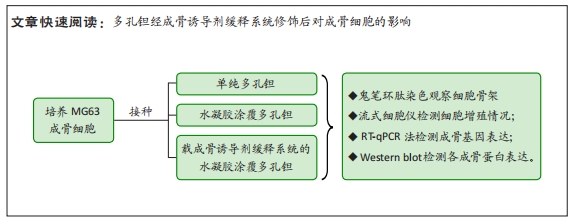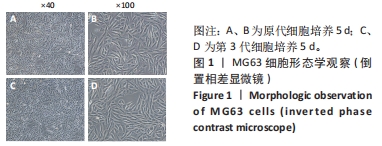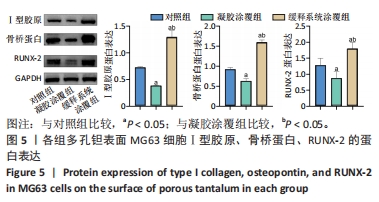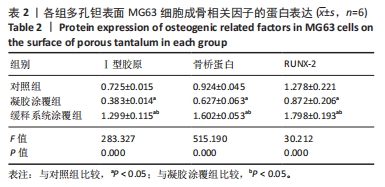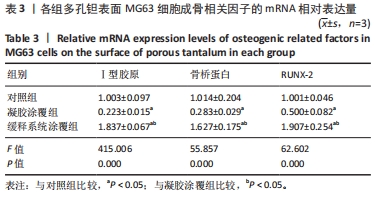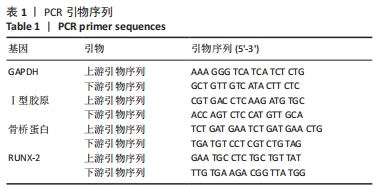[1] KASHIRINA A, YAO Y, LIU Y, et al. Biopolymers as bone substitutes: A review. Biomater Sci. 2019;7(10):3961-3983.
[2] ZHANG Z, LI Y, HE P, et al. Nanotube-decorated hierarchical tantalum scaffold promoted early osseointegration. Nanomedicine. 2021;35:102390.
[3] MA L, CHENG S, JI X, et al. Immobilizing magnesium ions on 3D printed porous tantalum scaffolds with polydopamine for improved vascularization and osteogenesis. Mater Sci Eng C Mater Biol Appl C. 2020;117:111303.
[4] LI JJ, EBIED M, XU J, et al. Current approaches to bone tissue engineering: The interface between biology and engineering. Adv Healthc Mater. 2018;7(6): e1701061.
[5] CHENG CY, PHO QH, WU XY, et al. PLGA microspheres loaded with β-cyclodextrin complexes of epigallocatechin-3-gallate for the anti-inflammatory properties in activated microglial cells. Polymers. 2018;10(5):519.
[6] SHI NQ, ZHOU J, WALKER J, et al. Microencapsulation of luteinizing hormone-releasing hormone agonist in poly (lactic-co-glycolic acid) microspheres by spray-drying. J Control Release. 2020;321:756-772.
[7] MA C, ZHANG Y, JIAO Z, et al. A nanocarrier based on poly (d, l-lactic-co-glycolic acid) for transporting Na+ and Cl− to induce apoptosis. Chin Chem Lett. 2020;31(6):1635-1639.
[8] SU Y, ZHANG B, SUN R, et al. PLGA-based biodegradable microspheres in drug delivery: recent advances in research and application. Drug Deliv. 2021;28(1): 1397-1418.
[9] UZER-YILMAZ B. In vitro contact guidance of glioblastoma cells on metallic biomaterials. J Mater Sci Mater Med. 2021;32(4):35.
[10] GIRÓN J, KERSTNER E, MEDEIROS T, et al. Biomaterials for bone regeneration: an orthopedic and dentistry overview. Braz J Med Biol Res. 2021;54(9):e11055.
[11] KANG C, WEI L, SONG B, et al. Involvement of autophagy in tantalum nanoparticle-induced osteoblast proliferation. Int J Nanomedicine. 2017;12: 4323.
[12] FAN H, DENG S, TANG W, et al. Highly porous 3D printed tantalum scaffolds have better biomechanical and microstructural properties than titanium scaffolds. Biomed Res Int. 2021;2021:2899043.
[13] Zhao D, MA Z, WANG T, et al. Biocompatible porous tantalum metal plates in the treatment of tibial fracture. Orthop Surg. 2019;11(2):325-329.
[14] HUANG G, PAN ST, QIU JX. The clinical application of porous tantalum and its new development for bone tissue engineering. Materials. 2021;14(10):2647.
[15] BAKRI MM, LEE SH, LEE JH. Improvement of biohistological response of facial implant materials by tantalum surface treatment. Maxillofac Plast Reconstr Surg. 2019;41(1):1-8.
[16] Gracia MAA. Osseoincorporation of porous tantalum trabecular-structured metal: a histologic and histomorphometric study in humans. Int J Periodontics Restorative Dent. 2018;38:879-885.
[17] MAJHY B, PRIYADARSHINI P, SEN AK. Effect of surface energy and roughness on cell adhesion and growth–facile surface modification for enhanced cell culture. RSC Adv. 2021;11(25):15467-15476.
[18] HUANG G, PAN ST, QIU JX. The osteogenic effects of porous Tantalum and Titanium alloy scaffolds with different unit cell structure. Colloids Surf B Biointerfaces. 2022;210:112229.
[19] GEE ECA, ELEOTÉRIO R, BOWKER LM, et al. The influence of tantalum on human cell lineages important for healing in soft-tissue reattachment surgery: an in-vitro analysis. J Exp Orthop. 2019;6(1):1-6.
[20] PIGLIONICO S, BOUSQUET J, FATIMA N, et al. Porous tantalum vs. titanium implants: enhanced mineralized matrix formation after stem cells proliferation and differentiation. J Clin Med. 2020;9(11):3657.
[21] COELHO MJ, FERNANDES MH. Human bone cell cultures in biocompatibility testing. Part II: effect of ascorbic acid, β-glycerophosphate and dexamethasone on osteoblastic differentiation. Biomaterials. 2000;21(11):1095-1102.
[22] DANHIER F, ANSORENA E, SILVA JM, et al. PLGA-based nanoparticles: an overview of biomedical application. J Control Release. 2012;161(2):505-522.
[23] TRUONG T, JONES KS. Capsaicin reduces PLGA‐induced fibrosis by promoting M2 macrophages and suppressing overall inflammatory Response. J Biomed Mater Res A. 2018;106(9):2424-2432.
[24] SOLHEIM E, SUDMANN B, BANG G, et al. Biocompatibility and effect on osteogenesis of poly (ortho ester) compared to poly (DL‐lactic acid). J Biomed Mater Res. 2000;49(2):257-263.
[25] WANG T, GUO S, ZHANG H. Synergistic effects of controlled-released BMP-2 and VEGF from nHAC/PLGAs scaffold on osteogenesis. Biomed Res Int. 2018;2018: 3516463.
[26] XIA P, WANG S, QI Z, et al. BMP-2-releasing gelatin microspheres/PLGA scaffolds for bone repairment of X-ray-radiated rabbit radius defects. Artif Cells Nanomed Biotechnol. 2019;47(1):1662-1673.
[27] SENADHEERA TRL, DAVE D, SHAHIDI F. Sea cucumber derived type I collagen: A comprehensive review. Mar Drugs. 2020;18(9):471.
[28] SIMS NA, VRAHNAS C. Regulation of cortical and trabecular bone mass by communication between osteoblasts, osteocytes and osteoclasts. Arch Biochem Biophys. 2014;561:22-28.
[29] MARELLI B, GHEZZI CE, BARRALET JE, et al. Three-dimensional mineralization of dense nanofibrillar collagen-bioglass hybrid scaffolds. Biomacromolecules. 2010;11(6):1470-1479.
[30] KIM LT, YAMADA KM. The regulation of expression of integrin receptors. Proc Soc Exp Biol Med. 1997;214(2):123-131.
[31] CHAN BPH, VINCENT K, LAJOIE GA, et al. On the catalysis of calcium oxalate dihydrate formation by osteopontin peptides. Colloids Surf B Biointerfaces. 2012;96:22-28.
[32] DAI B, XU J, LI X, et al. Macrophages in epididymal adipose tissue secrete osteopontin to regulate bone homeostasis. Nat Commun. 2022;13(1):427.
[33] DENHARDT DT, NODA M. Osteopontin expression and function: role in bone remodeling. J Cell Biochem Suppl. 1998;72(S30-31):92-102.
[34] LENTON S, SEYDEL T, NYLANDER T, et al. Dynamic footprint of sequestration in the molecular fluctuations of osteopontin. J R Soc Interface. 2015;12(110):0506.
[35] KOMORI T. Runx2, an inducer of osteoblast and chondrocyte differentiation. Histochem Cell Biol. 2018;149(4):313-323.
[36] HOU Z, WANG Z, TAO Y, et al. KLF2 regulates osteoblast differentiation by targeting of Runx2. Lab Invest. 2019;99(2):271-280.
[37] NARAYANAN A, SRINAATH N, ROHINI M, et al. Regulation of Runx2 by MicroRNAs in osteoblast differentiation. Life Sci. 2019;232:116676.
[38] DONG M, JIAO G, LIU H, et al. Biological silicon stimulates collagen type 1 and osteocalcin synthesis in human osteoblast-like cells through the BMP-2/Smad/RUNX2 signaling pathway. Biol Trace Elem Res. 2016;173:306-315.
[39] CHEN J, LV D, PAN Q, et al. Local application of the osteogenic inducer sustained-release system promotes early bone remodeling around titanium implants. Int J Oral Maxillofac Surg. 2022;51(4):558-565.
[40] CAI Q, SHI G, BEI J, et al. Enzymatic degradation behavior and mechanism of poly (lactide-co-glycolide) foams by trypsin. Biomaterials. 2003;24(4):629-638.
[41] MEYER F, WARDALE J, BEST S, et al. Effects of lactic acid and glycolic acid on human osteoblasts: a way to understand PLGA involvement in PLGA/calcium phosphate composite failure. J Orthop Res. 2012;30(6):864-871.
[42] LIU X, CHEN J, LUO Y, et al. Osteogenic inducer sustained-release system promotes the adhesion, proliferation, and differentiation of osteoblasts on titanium surface. Ann Anat. 2020;231:151523.
[43] 刘旭琳,张潇月,田欣,等.成骨诱导剂缓释系统对拔牙创骨改建的影响[J].安徽医科大学学报,2021,56(5):823-827. |
